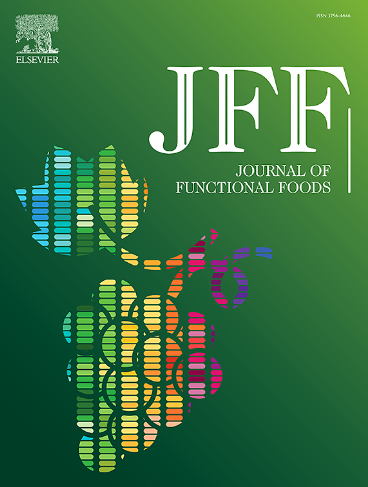Pittosporum glabratum leaf (Shanzhi tea) essential oil: Chemical composition, anticancer activities and potential mechanisms in vitro and in vivo
IF 3.8
2区 农林科学
Q2 FOOD SCIENCE & TECHNOLOGY
引用次数: 0
Abstract
Herein, the chemical constituents of Pittosporum glabratum leaf essential oil (EO) were analyzed, and its anticancer efficacy was explored in vitro and in vivo. Its primary phytochemicals were α-caryophyllene, (E)-β-farnesene, and germacrene D. It displayed significant cytotoxicity against cancerous A549 cells and lower cytotoxicity against noncancerous MRC-5 cells. It induced cell cycle arrest in the G1 phase by downregulating CDK2-cyclin E1/2 and CDK4-cyclin D3 complexes and upregulating p21, thereby inhibiting A549 cell proliferation. It triggered A549 cell apoptosis via the mitochondrial pathway, resulting in the ratio increase of Bax/Bcl-2, ΔΨm decrease, Cyt c release, caspase-9 and caspase-3 activation, and PARP cleavage. It blocked migration ability by decreasing MMP-2, MMP-9, and N-cadherin levels. Additionally, it effectively suppressed tumor growth by inducing apoptosis of transplanted tumor cells in nude mice. Hence, P. glabratum leaf EO has remarkable anticancer properties and has great potential as an anticancer drug in the pharmaceutical field.

山之茶光秃Pittosporum glabratum leaf (Shanzhi tea)精油:化学成分、抗癌活性及体内外潜在机制
本文分析了光秃秃Pittosporum glabratum leaf精油(EO)的化学成分,并对其体外和体内的抗癌作用进行了探讨。其主要植物化学物质为α-石竹烯、(E)-β-法尼烯和芽胞烯d,对癌变的A549细胞具有显著的细胞毒性,对非癌变的MRC-5细胞具有较低的细胞毒性。它通过下调CDK2-cyclin E1/2和CDK4-cyclin D3复合物,上调p21,诱导细胞周期阻滞在G1期,从而抑制A549细胞增殖。它通过线粒体途径触发A549细胞凋亡,导致Bax/Bcl-2比值升高,ΔΨm降低,Cyt c释放,caspase-9和caspase-3激活,PARP切割。它通过降低MMP-2、MMP-9和n -钙粘蛋白水平来阻断迁移能力。通过诱导裸鼠移植瘤细胞凋亡,有效抑制肿瘤生长。因此,光草叶EO具有显著的抗癌特性,在制药领域具有很大的抗癌潜力。
本文章由计算机程序翻译,如有差异,请以英文原文为准。
求助全文
约1分钟内获得全文
求助全文
来源期刊

Journal of Functional Foods
FOOD SCIENCE & TECHNOLOGY-
CiteScore
9.60
自引率
1.80%
发文量
428
审稿时长
76 days
期刊介绍:
Journal of Functional Foods continues with the same aims and scope, editorial team, submission system and rigorous peer review. We give authors the possibility to publish their top-quality papers in a well-established leading journal in the food and nutrition fields. The Journal will keep its rigorous criteria to screen high impact research addressing relevant scientific topics and performed by sound methodologies.
The Journal of Functional Foods aims to bring together the results of fundamental and applied research into healthy foods and biologically active food ingredients.
The Journal is centered in the specific area at the boundaries among food technology, nutrition and health welcoming papers having a good interdisciplinary approach. The Journal will cover the fields of plant bioactives; dietary fibre, probiotics; functional lipids; bioactive peptides; vitamins, minerals and botanicals and other dietary supplements. Nutritional and technological aspects related to the development of functional foods and beverages are of core interest to the journal. Experimental works dealing with food digestion, bioavailability of food bioactives and on the mechanisms by which foods and their components are able to modulate physiological parameters connected with disease prevention are of particular interest as well as those dealing with personalized nutrition and nutritional needs in pathological subjects.
 求助内容:
求助内容: 应助结果提醒方式:
应助结果提醒方式:


